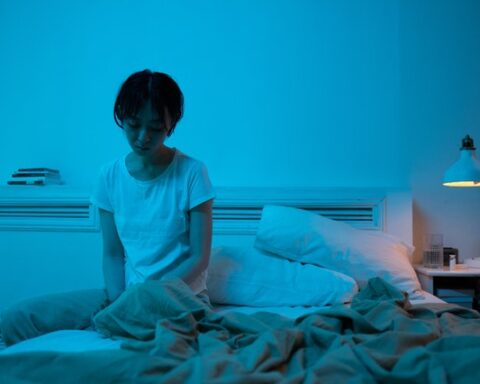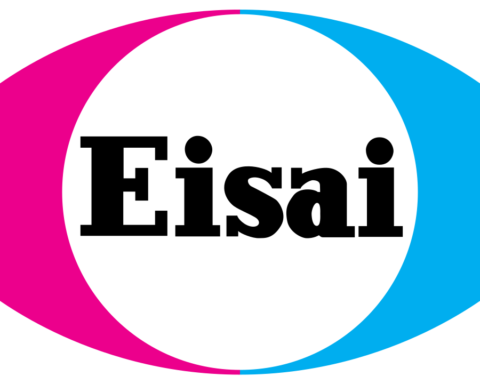Eisai Co., Ltd. announced today that it has obtained the manufacturing and marketing approval in Japan for its in-house discovered orexin receptor antagonist DAYVIGO (2.5mg, 5mg, and 10mg tablets, lemborexant) for treatment of insomnia.
DAYVIGO is a dual orexin receptor antagonist that inhibits orexin neurotransmission regulating sleep-wake rhythm by binding competitively to the two subtypes of orexin receptors (OX1R and OX2R). Blocking the binding of wake-promoting neuropeptides orexin to orexin receptors is thought to suppress wake drive by balancing sleep-wake circuitry. DAYVIGO binds to orexin receptors OX1R and OX2R and acts as a competitive antagonist with stronger inhibition effect on OX2R. Higher affinity and faster on/off receptor kinetics of DAYVIGO to OX2R, which also suppresses non-REM sleep, indicate its potential to facilitate the non-sedative onset and maintenance of sleep.
This approval was mainly based on the results of two pivotal Phase 3 clinical studies in adult patients with insomnia, SUNRISE 21 and SUNRISE 12, enrolling approximately 2,000 patients. Approval was also based on important safety studies (Study1083, Study1064), which included assessment of residual next-morning effects via postural stability (falling prediction indicator), memory after middle-of-the-night awakening.
SUNRISE 2 was a placebo-controlled 12-month Phase III clinical study conducted globally, including in Japan, to evaluate the long-term efficacy and safety of DAYVIGO in 949 male or female adult participants 18 to 88 years of age with insomnia. The study evaluated sleep onset latency (primary objective), subjective sleep efficiency and subjective wake after sleep onset (secondary objectives) by using patient-reported (subjective) sleep diaries. From an analysis of results, the primary efficacy endpoint and all secondary endpoints were achieved for both DAYVIGO arms. Statistically significant improvement in sleep onset and sleep maintenance was confirmed for both DAYVIGO arms compared to placebo. Daily functioning, as measured by both of the Insomnia Severity Index and the Fatigue Severity Scale, was also improved by both DAYVIGO 5 mg and 10 mg compared to placebo. The common Adverse Events (AEs) in the DAYVIGO arms were somnolence, nasopharyngitis, headache and influenza.
SUNRISE 1 was a placebo-controlled 1-month Phase III clinical study evaluating the efficacy and safety of DAYVIGO versus zolpidem tartrate extended-release (zolpidem ER) in 1,006 male or female adult patients 55 years and older (45% of patients were 65 years and older) with insomnia disorder, which was characterized by difficulty staying asleep. The study objectively assessed sleep latency (time taken between going to bed and falling asleep, primary objective), sleep efficiency and wake after sleep onset (effect on maintaining sleep, secondary objectives) using polysomnography. The results of the study showed that DAYVIGO 5 mg and 10 mg had statistically significant improvement compared to zolpidem ER 6.25 mg and placebo in sleep parameters evaluated in primary and key secondary objectives. Daily functioning, as measured by the Insomnia Severity Index, was also improved by both DAYVIGO 5 mg and 10 mg compared to placebo. The most common AEs in the DAYVIGO arms were headache and somnolence.
Across SUNRISE 2 and SUNRISE 1, DAYVIGO was not associated with rebound insomnia following treatment discontinuation and there was no evidence of withdrawal effects following DAYVIGO discontinuation at either dose.
In a SUNRISE 2 sub-population analysis of patients with or without comorbidity of insomnia, there was no difference between these two subgroups in the effect of DAYVIGO. Based on this result, the effect of DAYVIGO is suggested not only for primary insomnia, but also for insomnia associated with other diseases, such as depression.
In addition, the effects of DAYVIGO on next-day postural stability and memory were evaluated in two randomized, placebo- and active-controlled trials in healthy subjects and insomnia patients age 55 and older (Study 108 and SUNRISE1). There were no meaningful differences between DAYVIGO (5 mg or 10 mg) and placebo on next-day postural stability or memory compared to placebo. These results showed DAYVIGO had no meaningful residual next-morning effects.
In December 2019, the United States Food and Drug Administration (FDA) approved DAYVIGO for the treatment of adult patients with insomnia, characterized by difficulties with sleep onset and/or sleep maintenance. In the United States, DAYVIGO will be commercially available in 5 mg and 10 mg tablets following scheduling by the U.S. Drug Enforcement Administration (DEA), which is expected to occur within 90 days. In addition, Eisai submitted a new drug application seeking approval of DAYVIGO in Canada in August 2019.
Insomnia is characterized by difficulty falling asleep, staying asleep or both, despite an adequate opportunity to sleep, that can lead to daytime consequences, such as fatigue, difficulty concentrating and irritability.5,6 Insomnia is one of the most common sleep-wake disorders. Approximately 30% of adults worldwide have symptoms of insomnia.(7),(8) In particular, older adults tend to have a higher prevalence rate with many experiencing insomnia symptoms for months to years. As a result, insomnia causes various social losses, such as long absences and reduced productivity. It can increase the risk of falling in older adults.(9)
Through DAYVIGO’s ability to provide fast sleep onset and good quality sleep to many patients suffering from insomnia, Eisai aims to contribute to patients’ ability to have an active daytime lifestyle.
About DAYVIGOTM (Lemborexant)
Lemborexant is Eisai’s in-house discovered and developed small molecule that binds to orexin receptors, OX1R and OX2R, and acts as a competitive antagonist (IC50 values of 6.1 nM and 2.6 nM, respectively). The mechanism of action of lemborexant in the treatment of insomnia is presumed to be through antagonism of orexin receptors. The orexin neuropeptide signaling system plays a role in wakefulness. Blocking the binding of wake-promoting neuropeptides orexin to receptors OX1R and OX2R is thought to suppress wake drive (Ki values of 8.1 nM and 0.48 nM, respectively). Higher affinity and faster on/off receptor kinetics of lemborexant to orexin receptor 2, which also suppresses non-REM sleep, indicate its potential to facilitate the non-sedative onset and maintenance of sleep.
As a result of clinical studies, the effects of lemborexant are suggested not only for primary insomnia, but also for insomnia associated with other diseases, such as depression (SUNRISE 2).
In addition to the indication of insomnia, a Phase II clinical study of lemborexant in patients with Irregular Sleep Wake Rhythm Disorder (ISWRD) associated with mild-to-moderate Alzheimer’s dementia is underway.
About Sleep-Wake Disorders and Insomnia
Sleep-wake disorders consist of disease categories such as insomnia, ISWRD, hypersomnia and breathing-related sleep disorders. Among the sleep-wake disorders, insomnia is the most common with persistent insomnia symptoms experienced by approximately 30 percent of the adult population worldwide.7,8 Insomnia disorder is characterized by difficulty falling asleep, staying asleep or both, despite an adequate opportunity to sleep. It can lead to daytime consequences, such as fatigue, difficulty concentrating and irritability.(5),(6)
Good quality sleep is essential for good health, including brain health.10 Studies suggest an optimal sleep duration between seven and eight hours.(12) Poor sleep is associated with a wide range of health consequences, including an increased risk of hypertension, accidental injury, diabetes, obesity, depression, heart attack, stroke, dementia and adverse effects on mood and behavior.(5),(12)
Women are 1.4 times more likely than men to suffer from insomnia.13 Older adults also have higher prevalence of insomnia as aging is often accompanied by changes in sleep patterns, including disrupted sleep, frequent waking, and early waking, that can lead to less sleep time.14
About SUNRISE 2 (Study 303)(1)
SUNRISE 2 is a 12-month multicenter, global (Japan, North America, South America, Europe, Asia, and Oceania), randomized, placebo-controlled, double-blind, parallel-group Phase III study of 949 male or female adult participants (18 to 88 years of age) with insomnia disorder. SUNRISE 2 included a pre-randomization phase of up to 35 days (including a two-week placebo run-in period) and a randomization phase comprised of a six-month placebo-controlled treatment period, a six-month period of only active treatment, and a two-week period without treatment prior to the end-of-study-visit. Lemborexant 5 mg, 10 mg or matching placebo was taken orally in tablet form at home each night immediately before the patient intended to try to sleep for the first six months of study. Patients who received placebo during the first six-month period were administered lemborexant 5 mg or 10 mg for the second six-month period. Patients who received active treatment during the first period continued on the treatment to which they were originally randomized.
The primary outcome measure was mean change from baseline in subjective sleep onset latency after six months of placebo-controlled treatment. Key secondary outcome measures were mean change from baseline in subjective sleep efficiency and subjective wake after sleep onset after six months of placebo-controlled treatment.
From the results, the primary endpoint and all secondary endpoints for efficacy were achieved for lemborexant arms, and statistically significant improvements in sleep onset and sleep maintenance were confirmed for lemborexant arms compared to placebo during the six-month treatment period. The common AEs in the lemborexant arms were somnolence, nasopharyngitis, headache and influenza.
About SUNRISE 1 (Study 304)(2)
SUNRISE 1 is a multicenter, randomized, double-blind, placebo-controlled, active comparator, parallel-group Phase III study of the efficacy and safety of lemborexant in 1,006 patients 55 years and older (45% of all patients were aged 65 years and older) with insomnia disorder conducted in North America and Europe. SUNRISE 1 included a pre- randomization phase of up to 35 days (including a two-week placebo run-in period) and a randomization phase comprised of a 30-day treatment period and a two-week period without treatment prior to the end-of-study-visit. In this study, patients were administered placebo or one of three treatment regimens (lemborexant 5 mg, lemborexant 10 mg, zolpidem ER 6.25 mg).
The primary objective for SUNRISE 1 was to demonstrate using polysomnography that lemborexant at either the 5 mg or 10 mg dose is superior to placebo on objective sleep onset, as measured by latency to persistent sleep after the last two nights of one month of treatment. Key secondary endpoints included change from baseline in sleep efficiency for both lemborexant doses compared to placebo, wake after sleep onset (WASO) for both lemborexant doses compared to placebo, and WASO in the second half of the night (WASO2H) for both lemborexant doses compared to zolpidem ER, after one month of treatment, measured objectively by polysomnography.
The results of the study showed that lemborexant had statistically significant improvement compared to zolpidem ER 6.25 mg and placebo in sleep parameters evaluated in primary and key secondary endpoints. The common adverse events (AEs) in the DAYVIGO arms were headache and somnolence.
About Study 1083
Study 108 was a randomized, double-blind, four period crossover Phase I study to evaluate the effect of lemborexant on postural stability, auditory awakening threshold, and cognitive performance in 56 healthy volunteers 55 years and older. Participants were treated at bedtime with a single dose of placebo, lemborexant 5 mg, lemborexant 10 mg, or zolpidem ER 6.25 mg. The primary endpoint assessed postural stability when awakened by an alarm approximately four hours after administration of lemborexant compared to zolpidem ER, as measured by stabilometer.
While there was a statistically significant increase in body sway for both doses of lemborexant compared with placebo, Zolpidem ER increased body sway at a magnitude almost three times more than lemborexant. This increase with zolpidem was three times that, which is associated with a blood alcohol content (BAC 0.05 percent) near the legal driving limit.
The next morning, shortly after the end of eight hours in bed, unlike zolpidem ER, neither dose of lemborexant had statistically significant residual effects on this measure of postural stability as compared to placebo.
About Study 1064
Study 106 was a randomized, double-blind, placebo- and active-controlled, four period, crossover Phase I study to evaluate the effect of lemborexant in 48 healthy adults and elderly volunteers (23 to 58 years of age, mean: 58.5 years old) to evaluate on-road driving performance. Volunteers (65 years and older: 24, 23 to 64 years old: 24) were treated at bedtime with two out of three dose levels of lemborexant (2.5, 5 or 10 mg) and placebo for eight consecutive days. Zopiclone 7.5 mg as an active control was administered on days one and eight only, with placebo given for the six days in between. The primary endpoint was to evaluate change of standard deviation of lateral position (SDLP) during an on-road driving test conducted after the first (in the morning of Day 2) and last day (in the morning of Day 9) of treatment administration after 9-hour dose.
In the on-road test, the volunteers drove a specially instrumented vehicle for about one hour over 100km (approximately 60 miles) primary highway circuit, accompanied by a licensed driving instructor. The task was to drive with a steady lateral position between the delineated boundaries of the slower traffic lane, while maintaining a constant speed of 95km/h.
Although lemborexant at doses of 5 and 10 mg did not cause statistically significant impairment in next-morning driving performance in adult or elderly subjects (compared with placebo), driving ability was impaired in some subjects taking 10 mg lemborexant.
(1) Eisai Inc. A long-term multicenter, randomized, double-blind, controlled, parallel-group study of the safety and efficacy of lemborexant in subjects with insomnia disorder (E2006-G000-303). (Clinicaltrials.gov Identifier NCT02952820). 2018. Unpublished data on file.
(2) Russell R, et al. Comparison of Lemborexant With Placebo and Zolpidem Tartrate Extended Release for the Treatment of Older Adults With Insomnia Disorder, A Phase 3 Randomized Clinical Trial. JAMA Network Open. 2019;2(12)
(3) Eisai Inc. A randomized, double-blind, placebo-controlled and active-comparator, 4-period crossover study to evaluate the effect of DAYVIGO versus placebo and zolpidem on postural stability, auditory awakening. (E2006-A001-108) (Clinicaltrials.gov Identifier NCT03008447). 2017. Unpublished data on file.
(4) Eisai Inc. A randomized, double-blind, placebo- and active-controlled, 4-period crossover study to evaluate the effect of DAYVIGO versus placebo on driving performance in healthy adult and elderly subjects. (E2006-E044-106). (Clinicaltrials.gov Identifier NCT02583451). 2017. Unpublished data on file.
(5) Institute of Medicine. Sleep disorders and sleep deprivation: An unmet public health problem. Washington, DC: National Academies Press. 2006.
(6) Ohayon MM, et al. Epidemiology of insomnia: what we know and what we still need to learn. Sleep Med Rev. 2002;6(2):97- 111.
(7) Ferrie JE, et al. Sleep epidemiology – a rapidly growing field. Int J Epidemiol. 2011;40(6):1431-1437.
(8) Roth T. Insomnia: definition, prevalence, etiology and consequences. J Clin Sleep Med. 2007;3(5 Suppl):S7-S10.
(9) National Institute of Public Health. Sleep disorders practice guidelines – for the proper usage of sleeping medications and the
withdrawal: insomnia medical manual aiming for breaking through (available in Japanese only)
(10) Cappuccio FP, et al. Sleep and cardio-metabolic disease. Curr Cardiol Rep. 2017;19:110.
(11) Cappuccio FP, et al. Sleep duration and all-cause mortality: a systematic review and meta-analysis of prospective studies.
Sleep. 2010;33(5):585-592.
(12) Pase MP, Himali JJ, Grima NA, et al. Sleep architecture and the risk of incident dementia in the community. Neurology.
2017;89(12):1244-1250
(13) Roth T, et al. Prevalence and perceived health associated with insomnia based on DSM-IV-TR; International Statistical
Classification of Diseases and Related Health Problems, tenth revision; and Research Diagnostic Criteria/International Classification of Sleep Disorders, second edition criteria: results from the America Insomnia Survey. Biol Psychiatry. 2011;69:592-600.
(14) Crowley K. Sleep and sleep disorders in older adults. Neuropsychol Rev. 2011;21(1):41-53.
About Eisai
Eisai Co., Ltd. is a leading global research and development-based pharmaceutical company headquartered in Japan. We define our corporate mission as “giving first thought to patients and their families and to increasing the benefits health care provides,” which we call our human health care (hhc) philosophy. With approximately 10,000 employees working across our global network of R&D facilities, manufacturing sites and marketing subsidiaries, we strive to realize our hhc philosophy by delivering innovative products in various therapeutic areas with high unmet medical needs, including Neurology and Oncology.
In its medium-term business plan EWAY2025, Eisai is aiming to become a “Medico Societal Innovator” (a company that changes society through creating medicines and providing solutions), and is working on establishment of ecosystem platform business utilizing various data such as a large amount of clinical data, experiences, and know-how.








